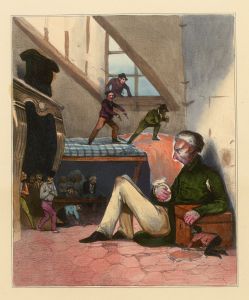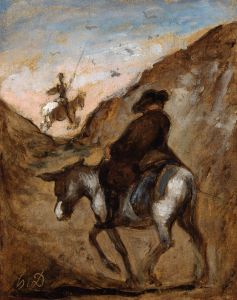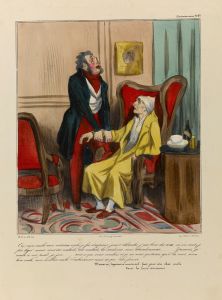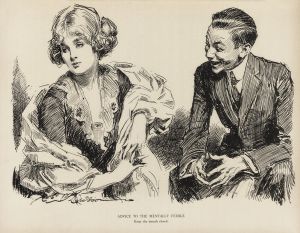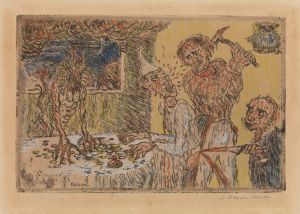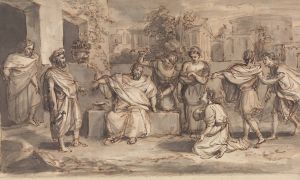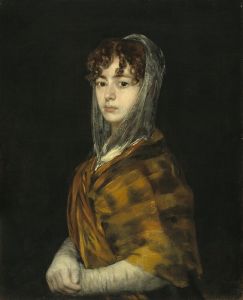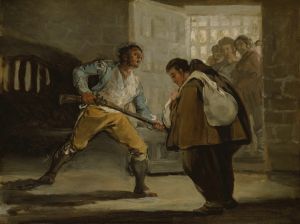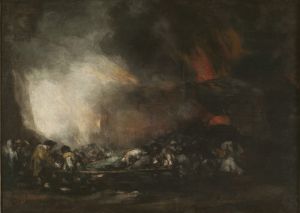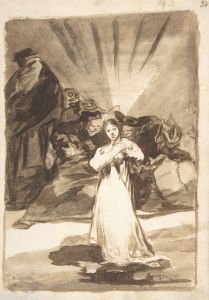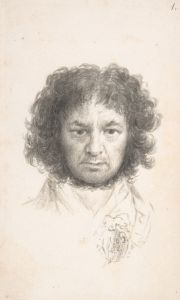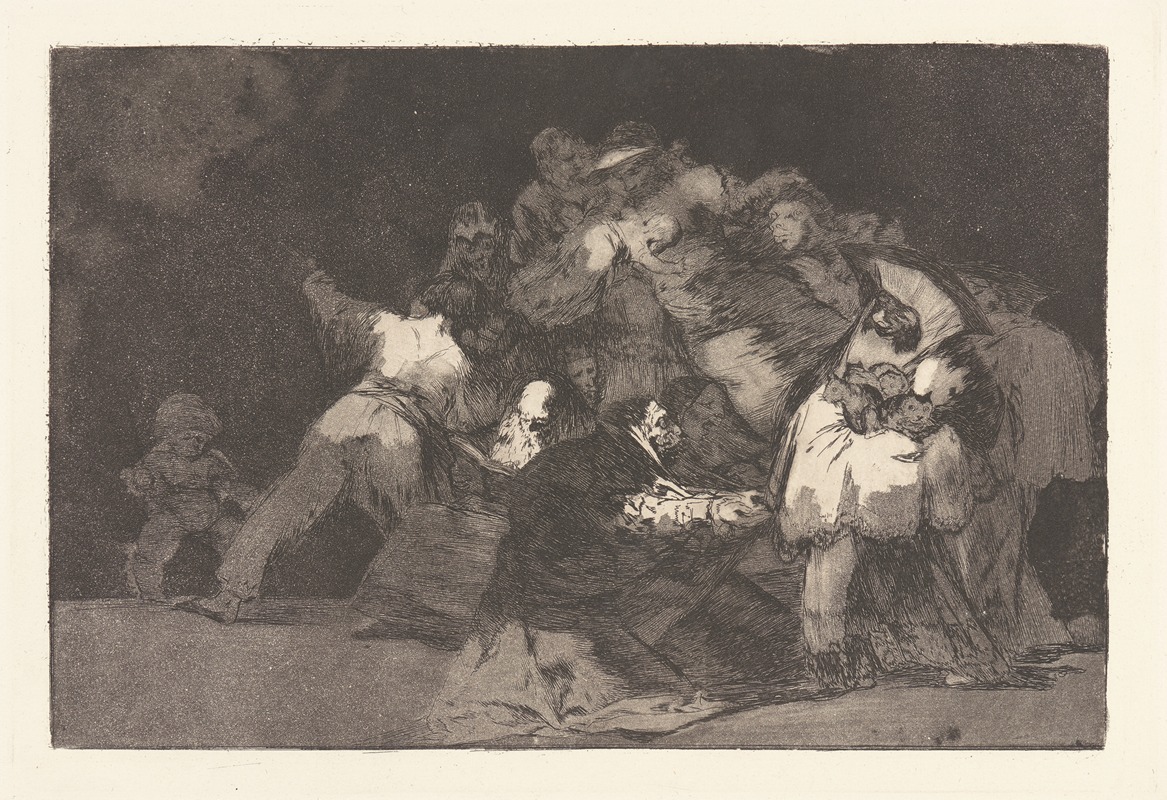
The Claws of a Cat and the Dress of a Devotee-Similar to Vice Is Often Clothed in Virtue’s Habit [General Folly]
A hand-painted replica of Francisco de Goya’s masterpiece The Claws of a Cat and the Dress of a Devotee-Similar to Vice Is Often Clothed in Virtue’s Habit [General Folly], meticulously crafted by professional artists to capture the true essence of the original. Each piece is created with museum-quality canvas and rare mineral pigments, carefully painted by experienced artists with delicate brushstrokes and rich, layered colors to perfectly recreate the texture of the original artwork. Unlike machine-printed reproductions, this hand-painted version brings the painting to life, infused with the artist’s emotions and skill in every stroke. Whether for personal collection or home decoration, it instantly elevates the artistic atmosphere of any space.
Francisco de Goya, one of Spain's most renowned artists, created a series of works that delve into the complexities of human nature and society. Among these works is "The Claws of a Cat and the Dress of a Devotee-Similar to Vice Is Often Clothed in Virtue’s Habit [General Folly]," a painting that reflects Goya's critical perspective on the moral and social issues of his time.
This painting is part of Goya's larger body of work known as the "Caprichos," a series of 80 etchings created between 1797 and 1798. The "Caprichos" are notable for their satirical and often darkly humorous commentary on the follies and vices of Spanish society. Goya used these etchings to critique the corruption, superstition, and hypocrisy he observed around him.
"The Claws of a Cat and the Dress of a Devotee-Similar to Vice Is Often Clothed in Virtue’s Habit [General Folly]" is a striking example of Goya's ability to convey complex ideas through visual art. The painting depicts a figure dressed in the garb of a devotee, but with the claws of a cat, symbolizing the deceptive nature of vice hidden beneath a veneer of virtue. This imagery suggests that appearances can be misleading and that individuals who present themselves as virtuous may, in fact, harbor malicious intentions.
Goya's use of symbolism in this painting is characteristic of his work during this period. The cat's claws represent cunning and deceit, while the devotee's dress symbolizes piety and righteousness. By combining these elements, Goya highlights the tension between outward appearances and inner realities, urging viewers to look beyond the surface to discern true character.
The "Caprichos" series, including this painting, was created using the technique of etching and aquatint. This allowed Goya to achieve a high level of detail and contrast in his works, enhancing their visual impact. The series was initially published in 1799, but Goya withdrew it from circulation shortly after its release, likely due to concerns about the potential backlash from the powerful individuals and institutions he critiqued.
Goya's work, including "The Claws of a Cat and the Dress of a Devotee-Similar to Vice Is Often Clothed in Virtue’s Habit [General Folly]," has had a lasting impact on the art world. His willingness to confront uncomfortable truths and challenge societal norms has cemented his legacy as a pioneering and influential artist. Today, Goya's "Caprichos" are celebrated for their boldness and insight, offering a window into the social and moral landscape of late 18th-century Spain.
In summary, "The Claws of a Cat and the Dress of a Devotee-Similar to Vice Is Often Clothed in Virtue’s Habit [General Folly]" by Francisco de Goya is a powerful work that exemplifies the artist's skill in using visual art to critique societal issues. Through its evocative imagery and symbolic content, the painting encourages viewers to question appearances and seek deeper truths, reflecting Goya's enduring relevance and artistic genius.





